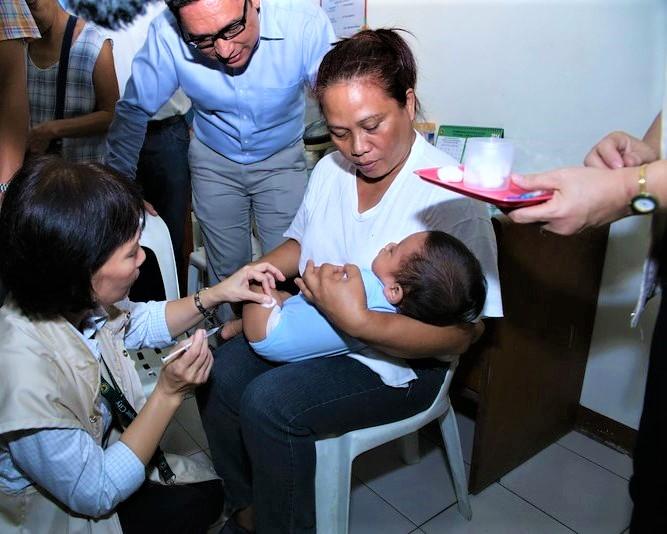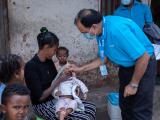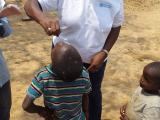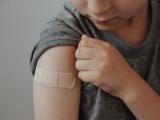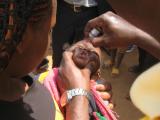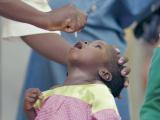Countries experiencing recent polio outbreaks saw no letup in activity, with Pakistan reporting five new wild poliovirus type 1 (WPV1) cases and four African nations, Pakistan, and the Philippines reporting more circulating vaccine-derives poliovirus type 2 (cVDPV2) cases, according to the latest update from the Global Polio Eradication Initiative (GPEI).
Also, the World Health Organization (WHO) posted new updates on cVDPV2 in Africa and Pakistan.
Pakistan grapples with WPV1, cVDPV2
Of the five new WPV1 cases reported from Pakistan, three were from different locations in Sindh province with the other two from separate cities in Khyber Pakhtunkhwa province. Paralysis onsets ranged from Oct 9 to Oct 7. The country has now reported 91 WPV1 cases this year, a sharp increase from 2018's 12 cases.
Also, two new cVDPV2 cases were reported, both from the town of Kohistan in Khyber Pakhtunkhwa province, bringing Pakistan's total for the year to 11. Patients' paralysis onsets were Oct 11 and Oct 27.
In a Nov 28 statement from the WHO on Pakistan's cVDPV2 outbreak, the group said the country's 11 cases were confirmed between Jul 7 and Nov 3 in children ranging in age from 8 to 66 months. The patients include four from the same district of Gigot-Baltistan province, six from three different cities in Khyber Pakhtunkhwa province, and one from Islamabad.
cVDPV2 was also found in stool samples from contacts of two patients and from 16 healthy children from three different districts. In other sampling, the virus was found in seven environmental samples collected between Aug 21 and Oct 25 in Punjab, Gilgit-Baltistan, and Sindh provinces. Genetic sequencing showed that a Punjab province environmental sample collected in August is linked to an environmental samples collected in Gilgit-Baltistan province in August and September, indicating a cVDPV2 outbreak.
Further testing shows that cVDPV2 isolates from patients, contacts, and environmental samples have undergone 6 to 13 nucleotide changes, reflecting recent cVDPV2 emergence, the WHO said.
Pakistan reported its last cVDPV2 case in December 2016, which prompted a monovalent oral poliovirus type 2 vaccine (mOPV2) campaign targeting 2.96 million kids. Inactivated poliovirus vaccine (IPV) was introduced in Pakistan in September 2015, but coverage has been suboptimal, ranging from 20% in 2015 to 75% in 2018.
A detailed field investigation is under way into Pakistan's latest cVDPV2 outbreak, and in the meanwhile, health officials launched an IPV campaign in September targeting 180,000 kids under 5, and the GPEI has helped Pakistan's health ministry launch a mOPV2 campaign that launched on Nov 13 in affected areas targeting 2.7 million children younger than 5.
The WHO said the risk of further spread within Pakistan is high, due to population movement and low population immunity against type 2 poliovirus. It added that detection of the strain underscores the importance of maintaining high levels of routine polio vaccine coverage.
cVDPV2 expands in Africa
In Africa, where an increasing number of countries are reporting cVDPV2 outbreaks, four counties reported new cases: the Democratic Republic of Congo (DRC), Benin, Ghana, and Togo.
The DRC reported five new cases, three from the same city in Kwilu province and one from Kwango province. Paralysis onsets range from Sep 22 to Oct 7. The DRC, beset by other outbreaks including Ebola and measles, has now reported 50 cVDPV2 cases for the year, a dramatic increase from 20 reported in 2018.
Meanwhile, Benin reported four new cases, one each from Atacora, Borgou, Collines, and Donga provinces. Patients' paralysis onsets were between Sep 21 and Oct 15. The new cases push the country's total for the year to six, which are linked to an outbreak this year in Nigeria's Jigwa state.
In Ghana, health officials reported four new cVDPV2 cases, one each from Northern, Bono, Oti, and Savannah provinces. Paralysis onsets range from Oct 8 to Oct 23. The country has now registered nine cases this year, which like Benin are also linked to an outbreak this year in Nigeria's Jigwa state.
And finally, Togo reported two more cases, both from the same city in Savanes province. The patients' paralysis onsets were Oct 6 and Oct 16. The developments lift Togo's cVDPV2 total for the year to three, which are also linked to Nigeria's recent Jigwa state outbreak.
In a separate report, the WHO on Nov 29 posted an update on cVDPV2 in Africa. It said a cVDPV2 outbreak in Nigeria's Jigwa state continues to spread, with the virus detected in four countries (Cameroon, Ghana, Benin, and Niger) earlier this year, and now detected in three more countries: Chad, Togo, and Ivory Coast.
Regarding cVDPV2 in east and southern Africa, the WHO described the investigation into Zambia's first cVDPV2 outbreak, which stands at one case, though two community contacts have tested positive. It notes that routine IPV coverage in children under age 1 was estimated at 36% in 2018.
In its update the WHO also detailed recent vaccine campaign responses to the African outbreaks, which includes two mOPV2 immunization rounds in Chad and Togo with one more planned before the end of the year. In Zambia, mOPV2 vaccination is under way, with a second round to launch later this month.
The WHO warned that risk of further spread in Africa remains high, due to cross-border movements, immunity gaps, inadequate surveillance, and waning mucosal immunity type 2 polio.
Philippines total rises to six
Elsewhere, the GPEI report notes three more cVDPV2 cases in the Philippines. Two are from the Autonomous Region in Muslim Mindanao and one is from southern Mindanao. Paralysis onsets range from Sep 25 to Oct 2. Also, five environmental samples that were positive for the virus have been reported from Manila.
The polio outbreak, first reported in September, is the Philippines first since 2000.
See also:
Nov 29 GPEI update
Nov 28 WHO statement on cVDPV2 in Pakistan
Nov 29 WHO update on cVDPV2 in Africa
